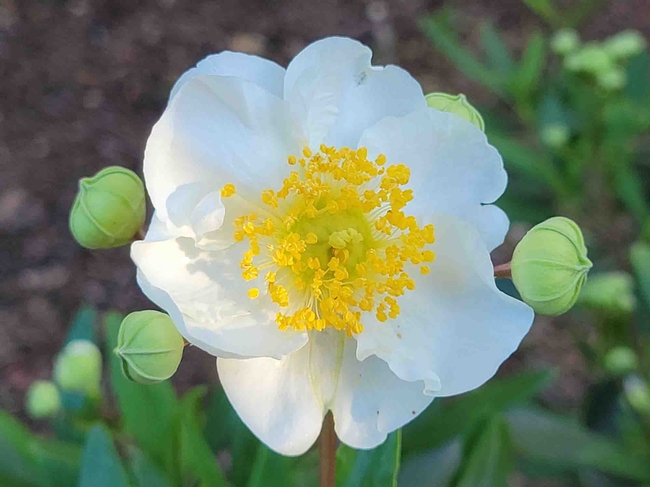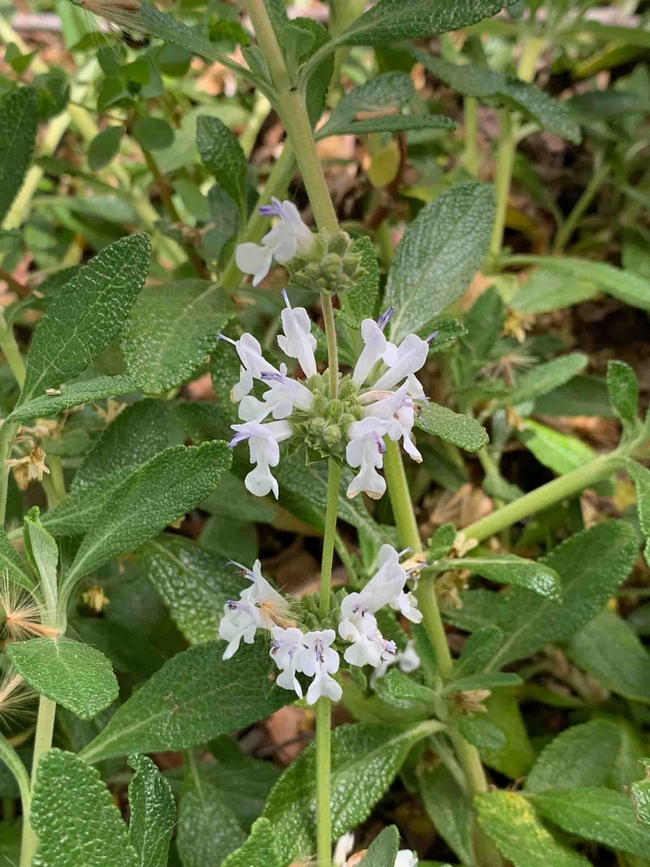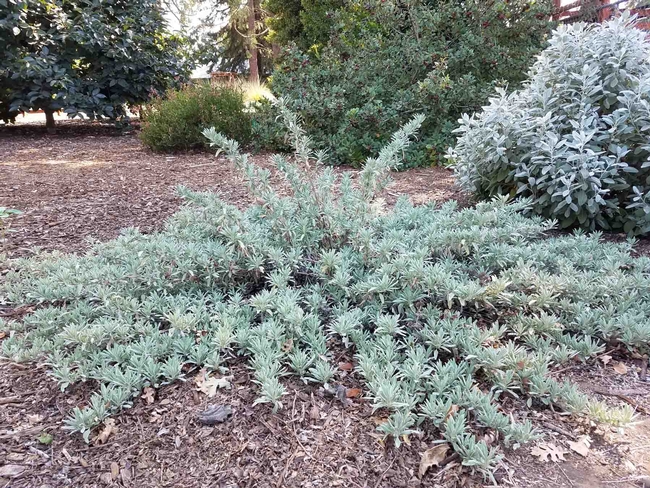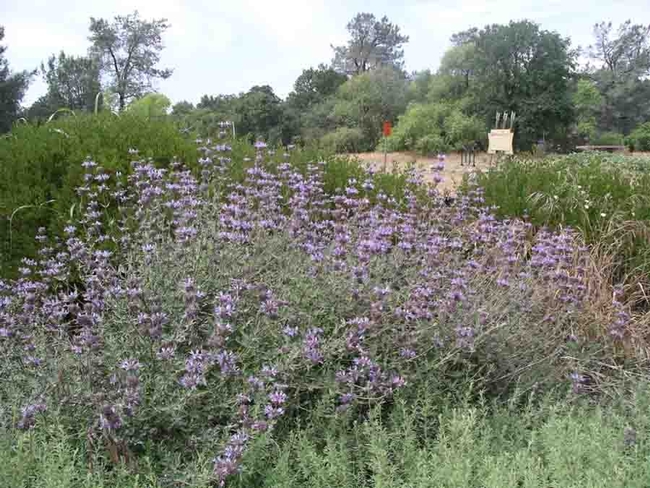Spring is here, and many native plants are coming into bloom. Orange California poppies color the roadside and hills. Redbuds burst with magenta flowers. Butterflies flutter among the blue dicks in grassy areas in upper Bidwell Park and along foothill roadsides. The good news is that many California native plants look just as good in the home garden as they do in the wild.
Carpenteria californica, Bush Anemone, Jeanette Alosi
Salvia Clevelandii 'Winifred Gilman' (Winifred Gillman Cleveland Sage), Laura Kling
Four easy-to-find sages are white sage (S. apiana), purple sage (S. leucophylla), creeping sage (S. sonomensis) and Cleveland sage (S. clevelandii).
- White sage has silvery foliage with white flowers that grow clustered on spikes rather than in whorls. It can be sheared lightly after flowering.
- Purple sage has gray-green leaves and pinkish-purple flowers and grows in a mound to four feet tall.
- Creeping sage is an eight-inch-tall groundcover which spreads to form a patch eight or more feet across. It has gray-green leaves with blue-violet flowers. Native to the northern Coast Range and Sierra Nevada foothills; on the valley floor it does better with some afternoon shade.
- Cleveland sage has dark green, aromatic leaves with purple flowers and grows to about three feet tall. Most sages benefit from annual pruning, especially to thin out woody centers.
Creeping Sage 'Bee's Bliss' flowering, Jeanette Alosi
UC Master Gardeners of Butte County are part of the University of California Cooperative Extension (UCCE) system. To learn more about us and our upcoming events, and for help with gardening in our area, visit our website. If you have a gardening question or problem, email the Hotline at mgbutte@ucanr.edu (preferred) or call (530) 538-7201.








